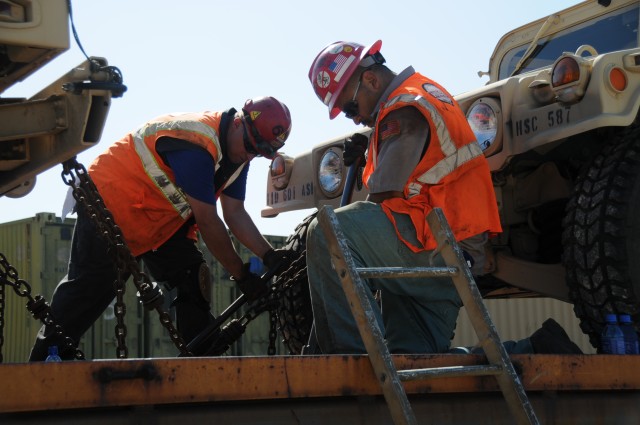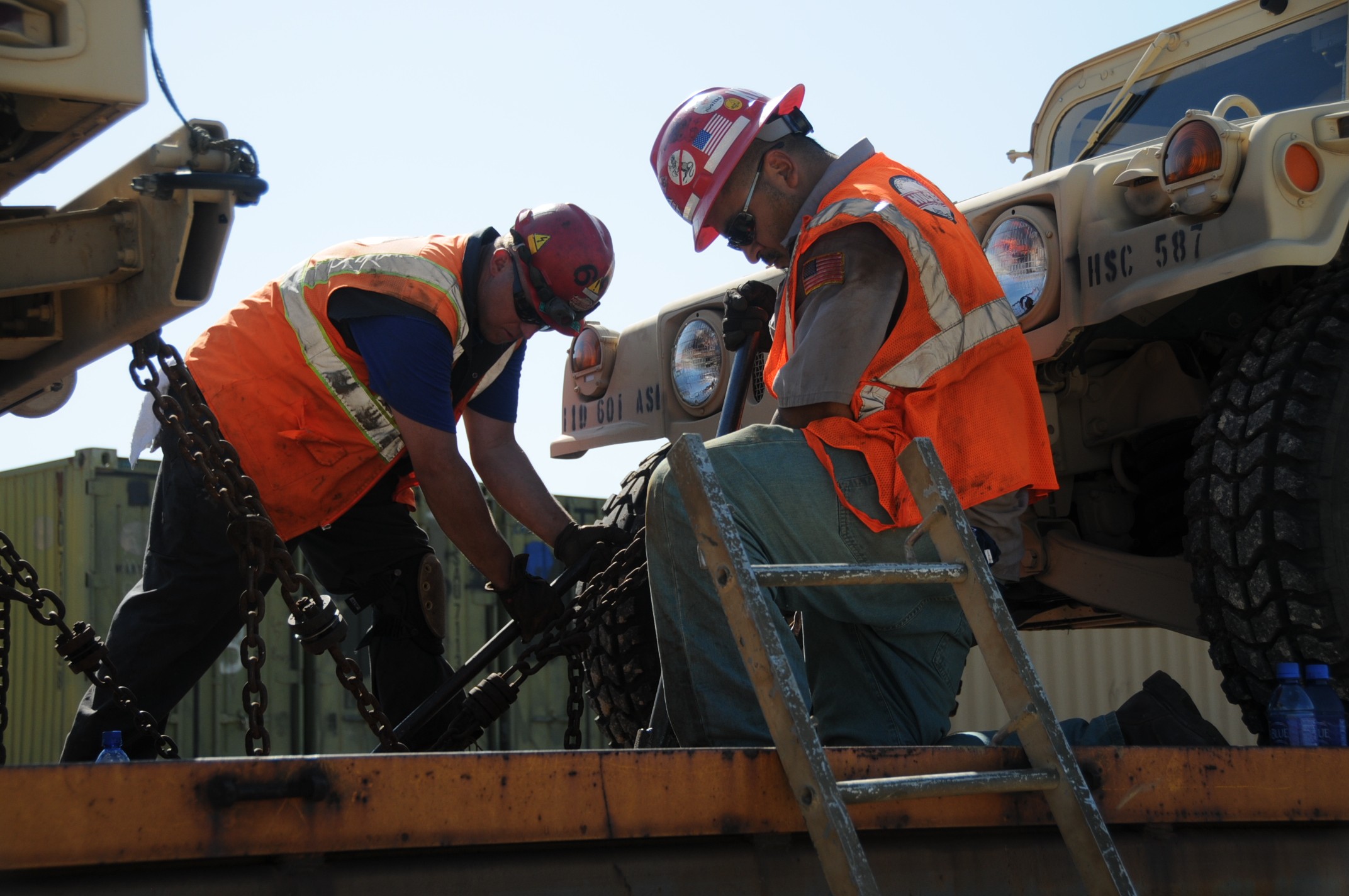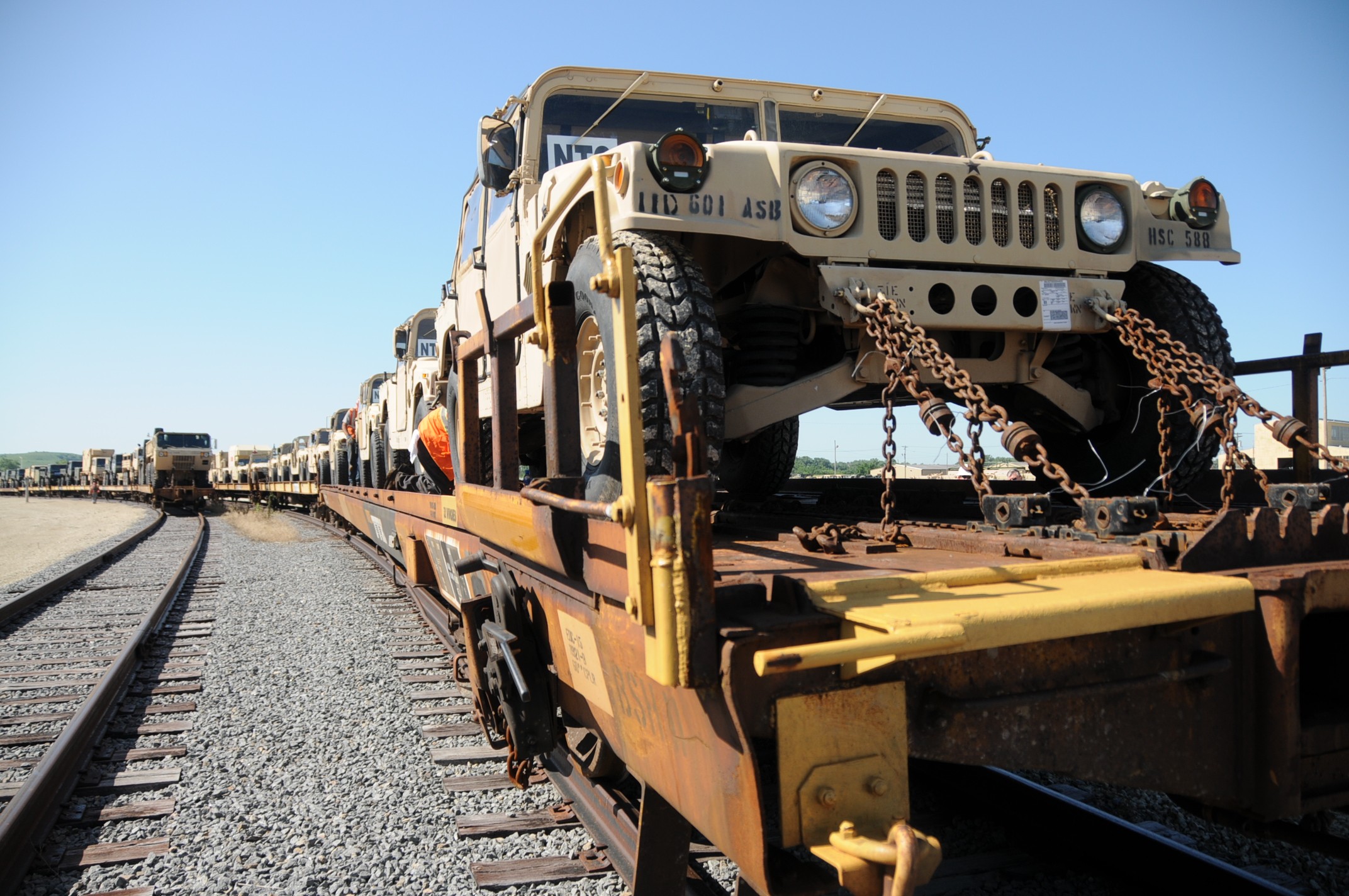FORT RILEY, Kan. - Fort Riley is putting the "rapid" back in deployment with a new $15 million railhead project.
The project, which has been five years in the making, is aimed at expediting the transportation of unit equipment for deployments and training, and also promises to add 30,000 additional square feet of track to Fort Riley's railway system within a year, said Dick Wollenberg, transportation officer for the Fort Riley Directorate of Logistics.
This will be the second time in 14 years Fort Riley has upgraded its railway system to expedite equipment for deployments, according to Wollenberg.
In 1995, the post completed a $17 million railhead project, which has continuously been improved upon with the addition of football stadium lighting for 24-hour operations; a side loading dock, where railcars can be loaded from both ends; improved surface and an extended staging area; and the addition of concrete, drainage and gravel to increase staging area capability, increasing the value of the railhead to $25 million.
However, during the same time Fort Riley was improving its railway system, the Union Pacific also was merging, modernizing and changing traffic on its routes to accommodate commercial business, Wollenberg said.
"The problem has really been getting out onto the Union Pacific main line to comprise trains, because their commercial traffic is always in competition with us," he said. "They have 17 coal trains going by in the course of the day, which is scheduled to go up to 27 coal trains, and they have grain trains going by during harvest time, which is about six months out of the year.
"What used to be a relatively unused line or seldom used line, has now become one of the Union Pacific's main lines. Essentially, what's happened is, the 'rapid' has been taken out of rapid deployment."
For example, Wollenberg said, 200 railcars can be loaded every 12 hours. Four hundred railcars can be loaded every 24 hours. The problem is getting the first 200 loaded railcars moved onto the main line to send them to the port.
"Doing 200 cars every 12 hours is the optimum - that is not currently reality. Reality is more like a 50-car train every 24 hours, which is far short of what our actual requirement is," he said.
Wollenberg said the additional tracks, along with the purchase of three locomotives, will allow Fort Riley to stage its own trains instead of depending solely upon the Union Pacific Railroad.
"Now, I will be able to stage seven trains on the tracks we are adding, and we will do that with our own locomotives," he said. "We'll never be on their side of the track - we'll always be on our side of the track. They'll come off their main line and all they'll have to do is pull up, hook up and haul it to the port. I'll never interfere with their traffic, and they'll never interfere with mine."
The contract for Fort Riley's new railhead project was awarded in July by the Army Corps of Engineers, Wollenberg said. The project has been a joint effort between Fort Riley and the Union Pacific Railroad, as well as many other players including the Transportation Engineering Agency, Forces Command, the Department of the Army and Information Management Command.
Efficiency in mind
Prior to the initial railhead project in 1995, transporting equipment to a war zone was extremely difficult, Wollenberg said.
"We had five or six earthen docks that were here and bad track maintenance. When the division deployed out of here for Dessert Storm, it took 18 days to get them out of here," he said. "Now, we can do the same thing in about six and half days, or a BCT (Brigade Combat Team) in a day and a half."
In his more than 20 years of military and civilian service at Fort Riley, Wollenberg has worked on countless projects to expedite deployment operations including the installation's Alert Holding Facility, Deployment Support Facility and the Manhattan Ramp.
All of those projects have been critical to successful deployment operations, he said, but the railhead project is just as paramount, if not more so to Fort Riley.
"Although we have been highly successful with deployment operations over the last seven years, we have primarily been dealing with one single brigade combat team movement at a time, as opposed to a full-up division deployment," he said. "This (project) will give us that capability."
In addition to being able to move equipment more efficiently, the project also will allow more Family time for transportation employees and reduce long-term costs associated with deployment operations, Wollenberg said.
"My organization works 365 days a year, 24 hours a day. It's not unusual for us to spend every weekend of the month working on deployments. This will make us more efficient and give us more time to spend with our Families," he said. "It's actually, in the long run, going to reduce costs because we won't be paying for switch engines from the Union Pacific, we'll have our own. There are a lot of hidden benefits in this project that just don't jump out at you when you look at them. It looks like its just metal, dirt and railroad ties, but that's not the case. This is 100 percent mission-orientated."




Social Sharing